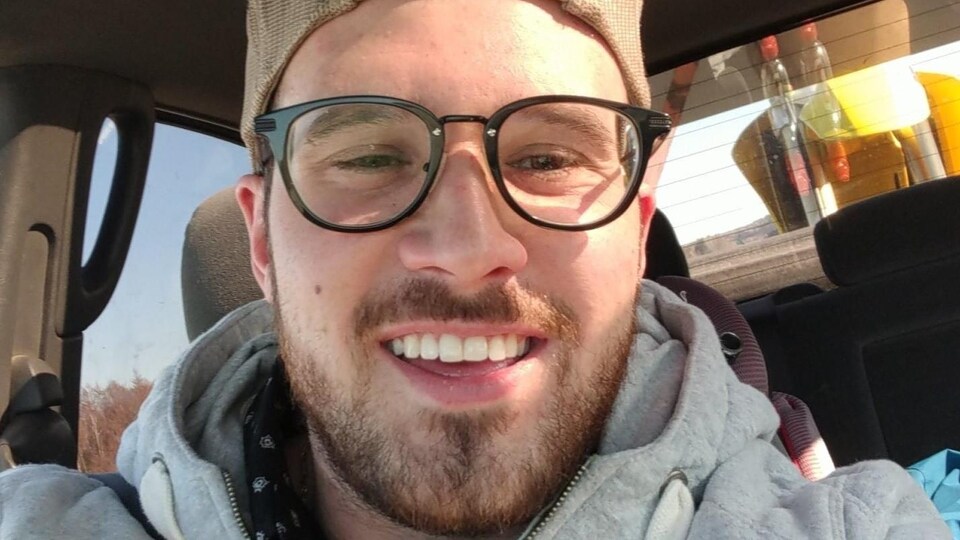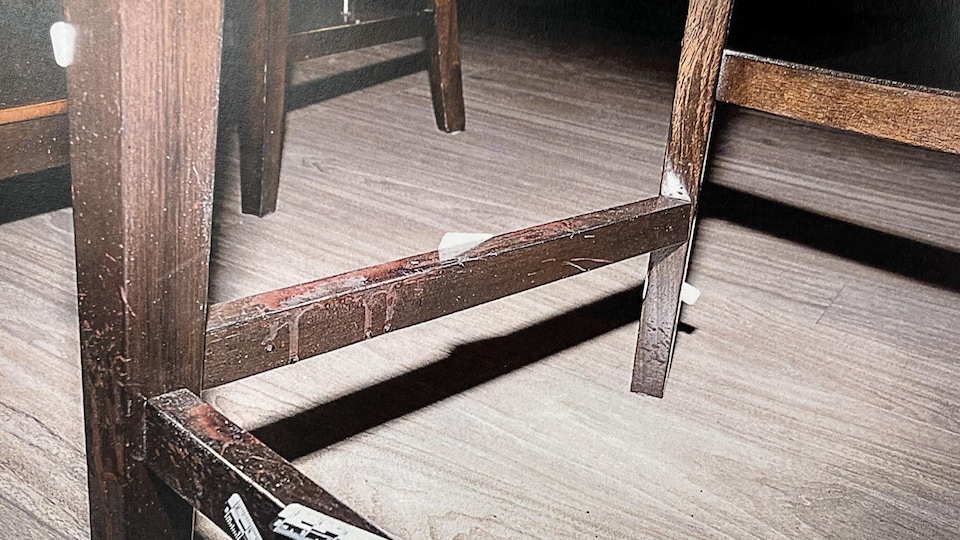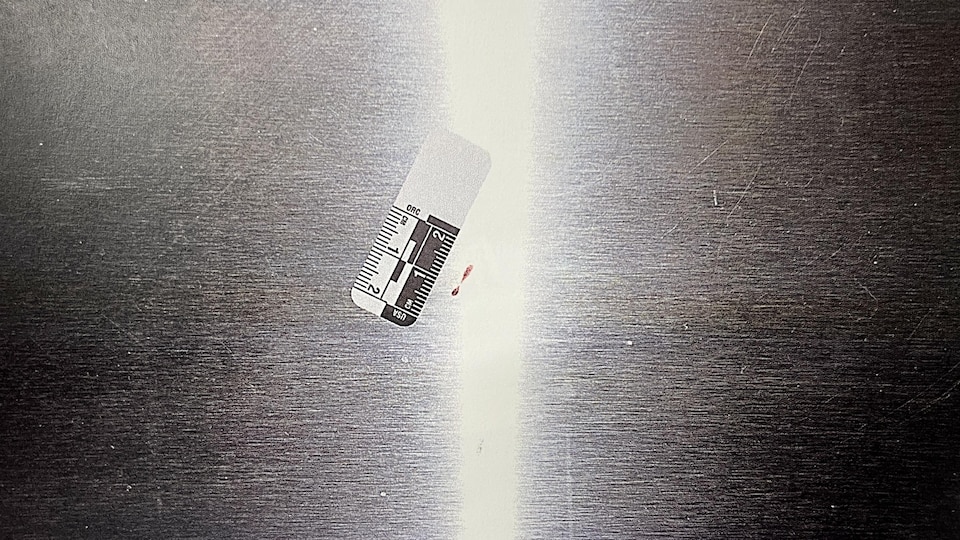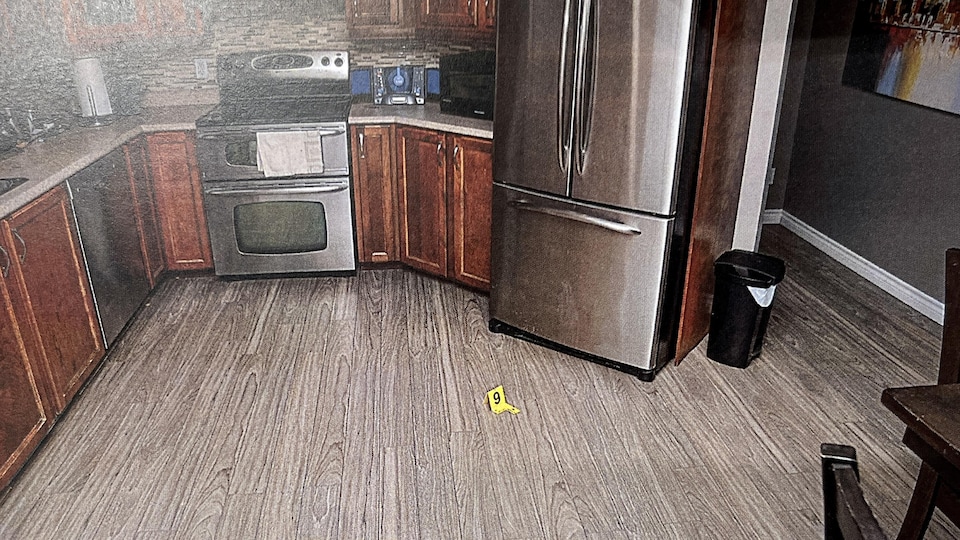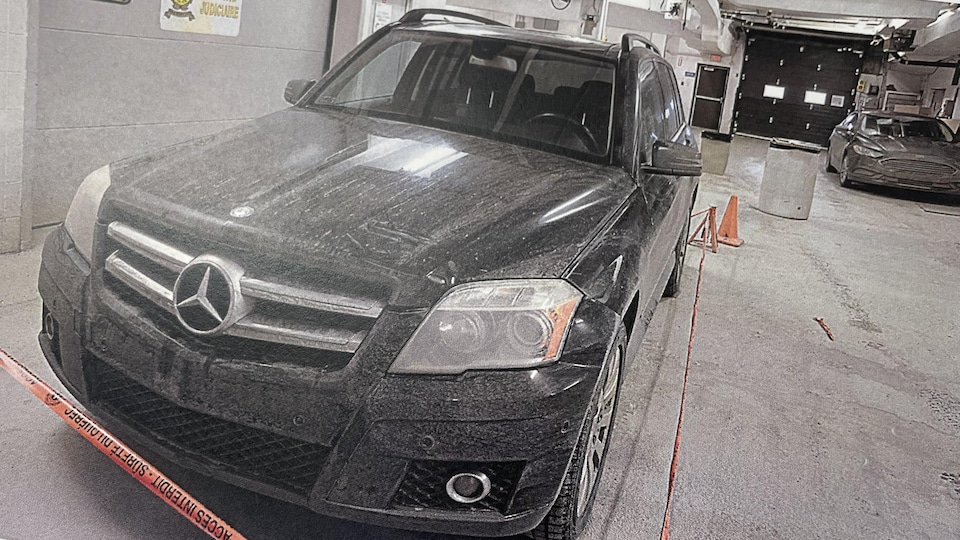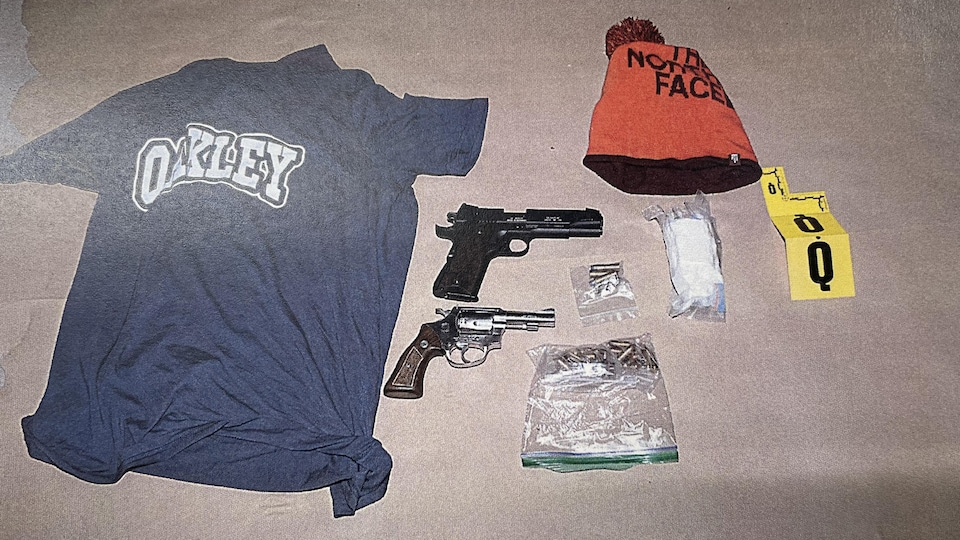
During his testimony, a good friend of Maxime Dugas-Lepage, Michaël Pelletier, spoke about cocaine trafficking in the Matane and Sainte-Anne-des-Monts areas on Wednesday at the trial of Steve Lévesque. Mr. Lévesque was charged with 2nd degree murder of Maxime Dugas-Lepage.
When questioned by prosecutor Manon Gaudreault, Michaël Pelletier admitted that he had been selling cocaine for about six months with Maxime Dugas-Lepage where he had delivered the drug. In court, he said he stopped his cocaine trafficking -related activities when the victim disappeared in January 2020.
At that time, we were buying [la cocaïne] by Steve Levesque, specifically said Mr. Pelletier. The prosecutor also asked this witness if he would recognize Steve Lévesque in the courtroom, which he did by pointing at him at the dock.
Michaël Pelletier explained that a week before the disappearance of Maxime Dugas-Pelletier, on January 20, they met the victim. guys ng the Matane gang.
He insisted that gang members would tell them they were selling cocaine in their territory, i.e. in Sainte-Anne-des-Monts. They would have informed Maxime Dugas-Lepage and Michaël Pelletier that they had to sell the drugs on behalf of the Matane gang than Steve Lévesque.
Michaël Pelletier continued his testimony by explaining that Maxime Labrie (the suspect arrested along with Steve Lévesque) would contact Maxime Dugas-Lepage to ask him to meet with him on his return from Sept-Îles .
According to Michaël Pelletier, Maxime Labrie allegedly told Maxime Dugas-Lepage that he was angry because the latter talked to members of the Matane gang.
The witness also added that the gang’s move had already begun and they had to leave Maxime Dugas-Lepage with Steve Lévesque’s group to join. the Matane gang in the days that followed.
Upon cross-examining by the defense attorney, Michaël Pelletier proved that, according to him, Maxime Dugas-Lepage would have sold cocaine for about a year before he disappeared.
Maître Pierre L’Écuyer also asked the witness if the victim possibly stole $ 3,100 from Mario Lafontaine. Michaël Pelletier replied that to his knowledge, it seemed impossible to him because Maxime Dugas-Lepage was in Sept-les at the time of the alleged theft.
Many photos were presented in court
A Sûreté du Québec (SQ) crime scene technician, Jean-Philippe Desjardins, was also called to the witness stand early Wednesday morning.
He presented four of the seven photo albums he will show in court. The snaps were taken on Jan. 23 and 24 at various locations believed to be crucial to the conduct of the alleged murder. The jury noticed the photos and examined them carefully.
The photos were taken specifically at Mario Lafontaine’s home in Sainte-Anne-des-Monts, the place where the murder allegedly took place.
Mr. Desjardins explained that while he was taking pictures, certain elements caught his attention. He said he noticed small red spots under the refrigerator, the trash can and kitchen chairs.
At the presentation of these photos, the victim’s family members who attended the trial showed signs of emotion and nervousness.
He also took close -up of areas, especially the refrigerator where there were traces of smearing. It caught my attention in the initial review [des lieux]he told the court.
According to his testimony, forensic biologists, who arrived at the scene around 2 p.m., used luminol, a product that shows traces of blood that would have been wiped on various areas of the residence, including the floor. of the kitchen and in a cleaning bottle. product located under the kitchen sink.
The crime scene technician continued his testimony by explaining that officers took a laptop computer, the bottle of detergent that reacted to the luminol test, a roll of paper towels and an empty package of eight rolls of paper towels.-seen all in the kitchen trash.
Only one fingerprint was seen at the scene, according to Jean-Philippe Desjardins. A palm print was taken from the handle of the freezer in the kitchen. Police identified it as belonging to Maxime Labrie.
The crime scene technician also showed photos taken at Maxime Dugas-Lepage’s home in Sainte-Anne-des-Monts, indicating that nothing special was seen at the scene.
Pictures of the clothes worn by suspects Maxime Labrie and Steve Lévesque were also shown hours after they were arrested in Rimouski on Jan. 26, but Jean-Philippe Desjardins explained that, there too, nothing attracted police attention. except for a brownish stain on Maxime Labrie’s jacket.
Weapons were found in the suspects’ vehicle
Jean-Philippe Desjardins revealed to the jury the photos taken on Jan. 26 of the search for the black Mercedes sport utility vehicle of the suspects.
Several items were seized aboard the vehicle, including two handguns of two different calibers, cartridges of three different calibers and a bag containing white powder.
Tests performed using a luminescent liquid also revealed the presence of potential traces of blood in some areas in the vehicle. This liquid becomes luminescent when it responds to contact with blood. Samples for analysis were taken from these vehicle parts.
The testimony of Jean-Philippe Desjardins is due to continue Thursday morning.
Source: Radio-Canada
